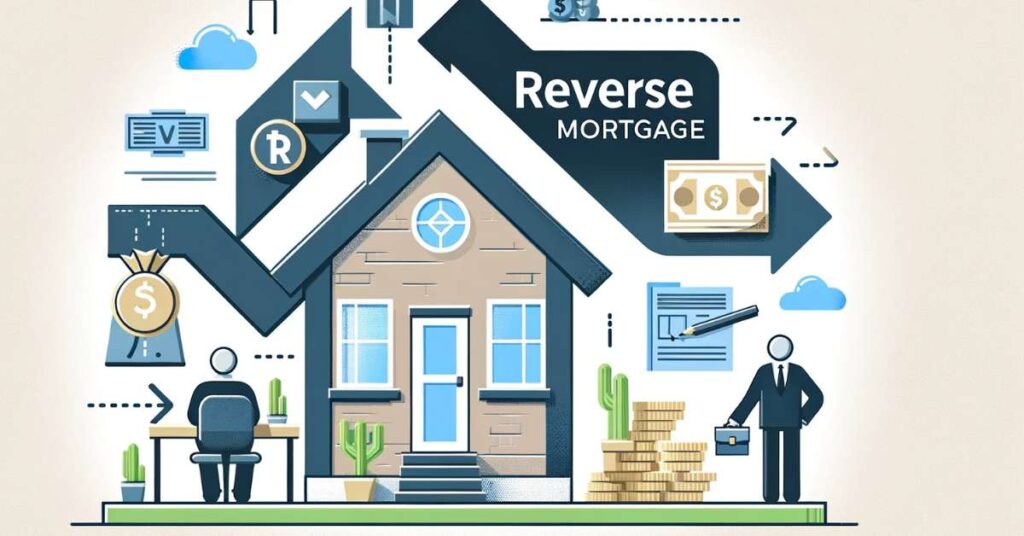Introduction
Firstly, let me apologise for the title of this post. I’ve only called it this because I have had many clients over the years literally ask me for such a guide in these words (on this and many other topics). So I have set out to create a simple explanation of reverse mortgage.
Understanding a reverse mortgage can seem challenging, especially if you’re not familiar with financial jargon. This article aims to demystify reverse mortgages in an easy-to-understand format, providing essential insights for those considering this option in their retirement planning.
1. What is a Reverse Mortgage?
A reverse mortgage is a type of loan designed for homeowners aged 62 or older, allowing them to convert part of their home equity into cash. This means you can receive money from your lender based on your home’s value, without having to sell your home.
2. How Does It Work?
In a reverse mortgage, instead of making monthly payments to the lender, the lender makes payments to you. The amount you receive depends on your age, the value of your home, and current interest rates.
3. Who is Eligible?
To qualify for a reverse mortgage, you must be at least 62 years old, own your home outright or have a substantial amount of equity in it, and the home must be your primary residence.
4. Types of Reverse Mortgages
There are three main types:
- Home Equity Conversion Mortgage (HECM): The most common type, federally insured and backed by the U.S. Department of Housing and Urban Development.
- Proprietary Reverse Mortgage: Private loans that are not federally insured and typically for higher-valued homes.
- Single-Purpose Reverse Mortgage: Offered by some state and local government agencies and non-profits for a specific purpose.
5. Receiving the Funds
You can choose how to receive the funds from a reverse mortgage: as a lump sum, fixed monthly payments, a line of credit, or a combination of these options.
6. What Happens to the House?
You retain the title to your home and can live in it. However, you must keep up with property taxes, insurance, and maintenance.
7. Repayment Conditions
The loan becomes due when the last surviving borrower dies, sells the home, or no longer uses the home as a primary residence. The house is usually sold, and the proceeds are used to pay off the reverse mortgage.
8. Impact on Inheritance
The remaining equity in your home, after the reverse mortgage is paid off, can be passed on to your heirs. However, it’s important to know that a reverse mortgage can decrease the equity you leave behind.
9. Risks and Considerations
Reverse mortgages can have high upfront costs, including origination fees, insurance, and closing costs. It’s also crucial to understand that a reverse mortgage can affect your eligibility for certain government benefits.
10. Seeking Advice
It’s strongly advisable to consult with a financial advisor or a reverse mortgage counselor to understand the implications fully and make an informed decision.
Conclusion
A reverse mortgage can be a valuable financial tool for seniors looking to supplement their income, but it’s essential to fully grasp its complexities. By understanding how a reverse mortgage works, its benefits, and potential drawbacks, you can make a decision that aligns with your financial goals and lifestyle needs. Remember, taking the time to educate yourself and seeking professional advice can lead to a more secure and enjoyable retirement.

Too discrete to give his real age (but certainly in the grizzled veteran bracket), Tom is an Army brat who spent much of his childhood overseas. After moving back to Florida in the 80’s with his family, Tom worked a variety of jobs after college before finding his calling in the mortgage industry. Now, adding his decades worth of experience to this site, Tom hopes to help others with his knowledge.
After working through the 2008 crisis in a hard hit bank, Tom knows only too well the impact his industry has on people’s lives. Now semi-retired, Tom spends his days keeping up with the latest news in the mortgage industry (and finding the odd hour or three to fish).
